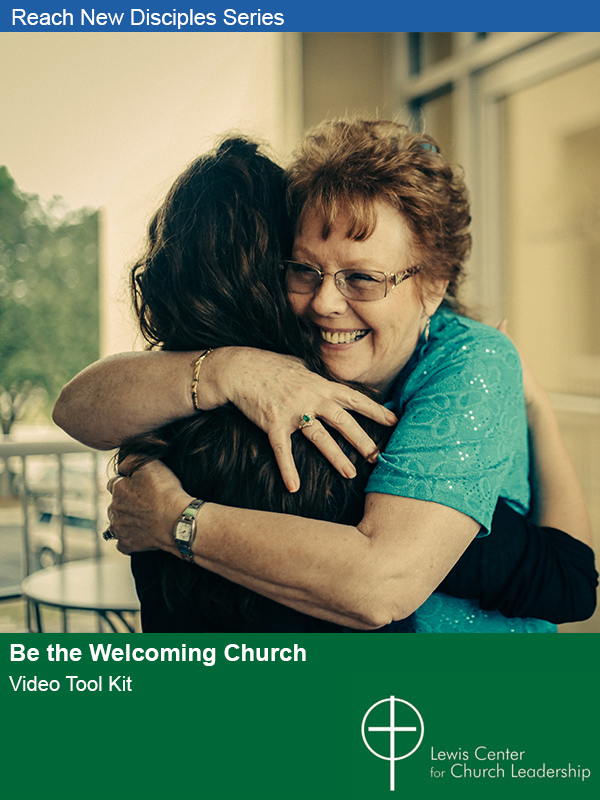Does it seem that you still see the same people in worship on Sunday but not as often? For a number of years, declines in attendance have come not primarily from people giving up on the church but from a less frequent pattern of attendance by members. Even as churches work hard to reach more people in worship, they are also coming to grips with changing patterns that may call for strengthening other ways to connect with people and to foster those ties and relationships that lead to more active discipleship.
The objective is to name something that will draw three constituencies into conversation — some active church people, some connected but not especially active, and those they invite to come with them because the topic is so engaging.
Changing patterns of worship attendance: Five years ago in a Christian Century article, “No Shows,” (September 22, 2010), I called attention to a trend by that time well-established among mainline denominations. After relatively strong worship attendance in the 1990s through 2001, a downward trend began in 2002 and continues today. In that article I named a number of reasons that may be behind the decline, one of which emerged as the most commonly accepted reason — worshipers attend less frequently than before.
Some say the definition of regular church attendance has changed. Pastors have observed that many church members identify themselves as regular churchgoers even though they may attend only twice a month or less. In earlier times, being a regular churchgoer meant coming to worship almost every Sunday. In more recent times, a host of evangelical church observers have begun to name the same phenomenon. In 2013, pastor and popular blogger Carey Nieuwhof said everywhere he goes he hears the same thing, “People who attend church are attending less often.” A bit later Thom Rainer, Southern Baptist author and president of Lifeway Christian Resources, called this trend the “number one reason for the decline in church attendance.” And earlier this year consultant Will Mancini called this pattern “the most important trend of church trends in 2015.” Each of these writers not only names the challenge, but some pastors and writers are offering suggestions to address it.
Addressing the changes: There need to be vigorous efforts to increase attendance. At the heart of any church’s purpose is to glorify God and to share God as revealed in Jesus Christ; thus worship is at the center of the congregation’s life. Without vital worship, it is unlikely that members are growing and new disciples are being brought to faith. Tom Berlin and I wrote a book, Overflow: Increase Worship Attendance and Bear More Fruit, specifically to help congregations do just this.
However, something more needs to be said. How people relate to church and their spiritual lives is changing. Churches may need to exercise new muscles to engage people in a greater variety of ways. Keith Anderson in his new book, The Digital Cathedral, calls attention to “four types of church belonging” suggested by Church of England Bishop David Walker. The four types are activities, events, relationships, and place. Bishop Walker points out that for most people who lead and are most active in churches, the preferred mode of belonging is activities — worship, study sessions, and the like. He maintains that there are others who connect more through events (wary of regular commitments), relationships (connections with specific people), and place (sacred space). These modes are not exclusive, but they help us see how different aspects of church life may be the nurturing times for various people who by conventional standards appear less connected than church leaders might like.
The power of relationships and conversation: I want to focus now on one of the types: relationships. We are learning more and more about the power of friendships and close personal connections among church people. Perhaps more of our time should be devoted to opportunities to foster such relationships. Keith Anderson, in his insightful book, suggests that today churches have a three-fold task in relating to their constituencies: connect, convene, and converse. This involves far more than adding studies and small groups, which can help, but tend to be “activities” for the already deeply engaged.
Could it be that we look at church people so much through the lens ofour priorities that we fail to see what the church is offering — or failing to offer — through the eyes of the people we seek to reach and draw deeper to Christ? Viewing this context more from the perspective of others, especially the less engaged, we may see that their life situation causes them to need and respond to other ways of engaging their spiritual lives and people of faith before the practice of regular worship feels compelling to them.
This is where conversations come in. How many opportunities are there where people come together for important conversations without having to join an ongoing group? Existing groups count, but they tend not to reach the less engaged and their friends. New kinds of conversation groups are more likely to include a broader range of active and less active people who are drawn together by a particular need or interest.
How do we gather persons for conversation? How might there be ways to build in such conversation times throughout the year and with a range of diverse people from the congregation and beyond? Virtually every season of the year lends itself to times for people to talk about important matters.
What topics might be a focus? Compare such possibilities to inviting people to use your building for an event. We know that hosting events at your church is most effective in connecting new people when the event is one that, instead of appealing only to church members or to an audience totally beyond the church, appeals both to some within and some outside the church. Similarly, think of conversation topics that have such broad appeal to people with shared needs, interests, or life situations. Think of a framing question or theme that touches some at points of felt need. It is not a large group you are seeking but people with shared interests and needs.
Think of those who might benefit from your ministry of connecting, convening, and conversing. As school begins, what if school teachers were invited to discuss something pertinent to them and invited some of their colleagues? Near holidays, there might be a time of conversation among those who have lost a loved one in the last year. Parents with children in college or anticipating that experience might talk about college funding. Parents of pre-school children might appreciate a chance to explore together.
These are not teaching sessions, though there may be a place for such, perhaps even growing out of these conversation times. The point is to find increasing ways for active, somewhat active, and unengaged people to get to know one another and to benefit from one another. For any session, the goal is to have a topic so compelling that persons come based on the pertinence of the theme to their lives. What would be a subject compelling for the group? Think with some of those you are seeking to reach about what life looks like from their perspective. Think about their dilemmas, questions, and aspirations. The objective is to name something that will draw three constituencies into conversation — some active church people, some connected but not especially active, and those they invite to come with them because the topic is so engaging.
Relationships are everything. Notice how new church planters today focus heavily on building relationships. They know that without those strong bonds, there is not the foundation for active worship participation. Just as attending worship puts us in a place where it is more likely that God is glorified and we grow as disciples, so it is that conversation groups put people in a place where relationships develop and friendships form. This is a great opportunity for your church and for them. As convener, you are permitting people to meet and get to know one another who might never have that opportunity. They can share from their hearts with people who understand their situations.
Jesus said “where two or three are gathered in my name, I am there among them” (Matthew 18:20), a passage used often in very small churches such as one I served that literally had only two people plus me when they worshiped. But can’t we say that Christ is present when people have a chance to engage other people through conversations that matter to them? Such connecting, convening, and conversingdoes not come at the expense of worship but as a complement to the worship, study, and service opportunities, and can be a precursor of deeper involvement.
Related Resources:
- Create New Entry Points by F. Douglas Powe, Jr. and Jasmine Smothers
- Changes Congregations are Facing Today ebook by Lovett H. Weems, Jr.







